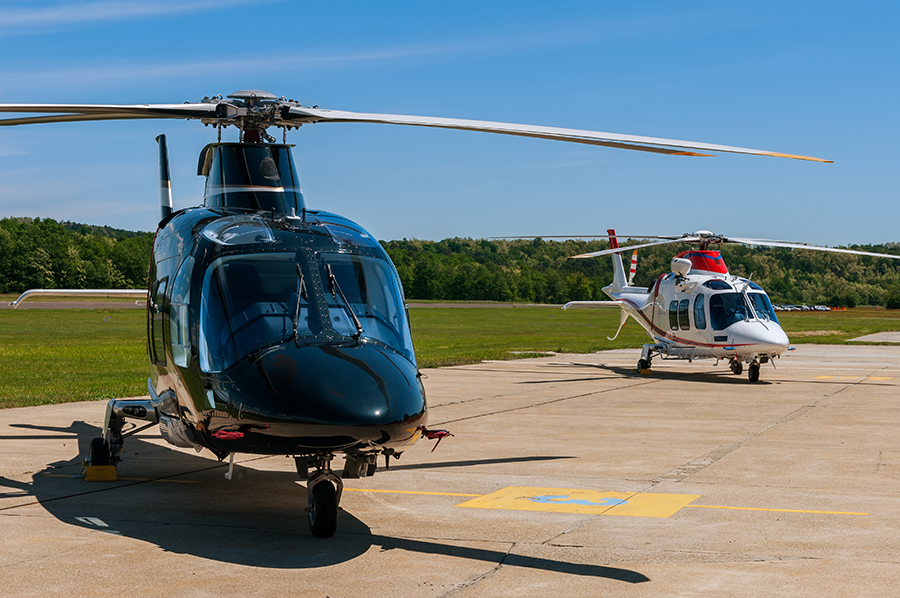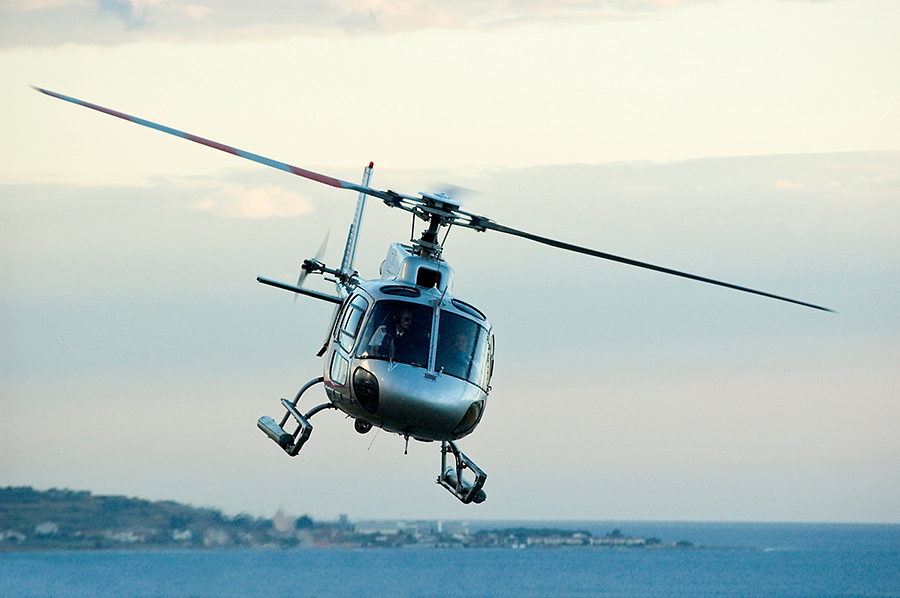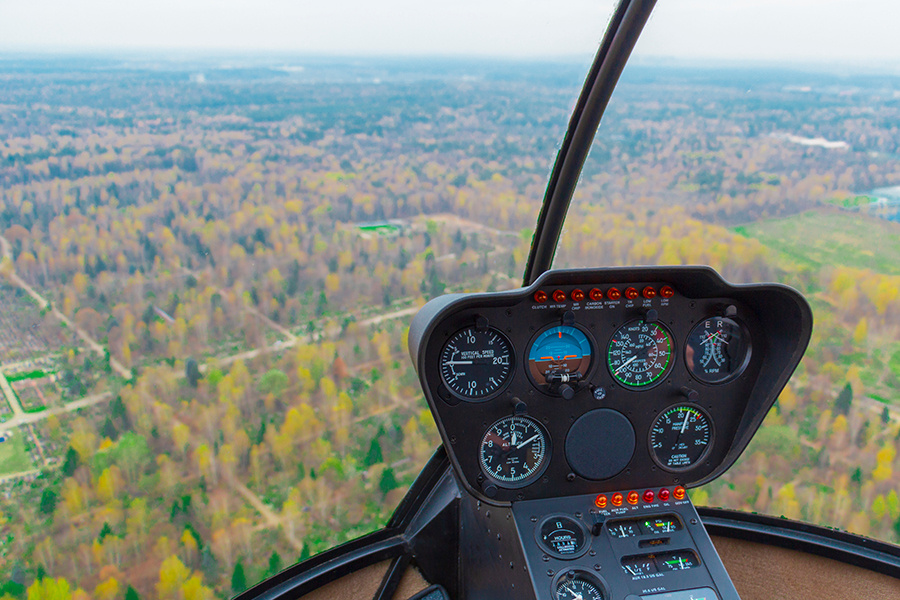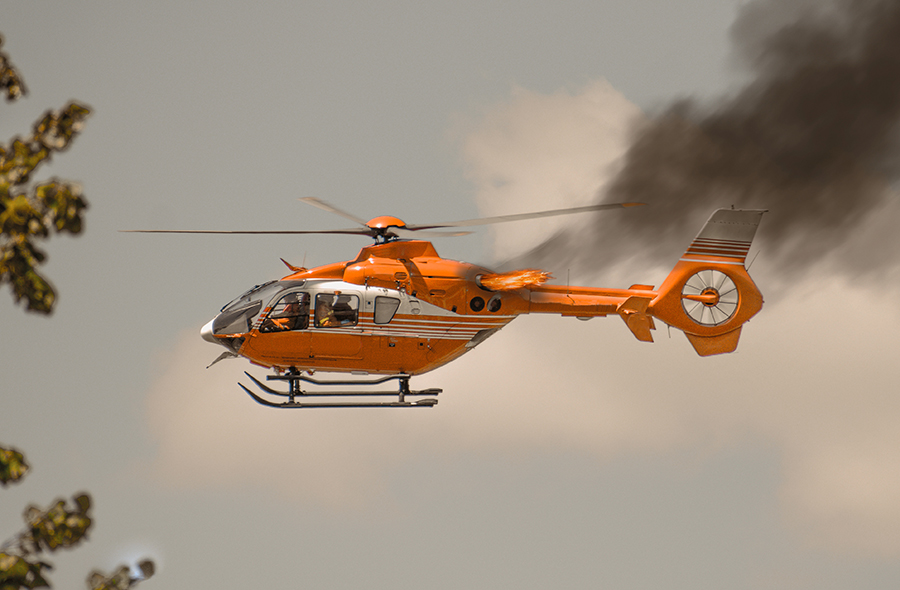-
Converting To New Helicopter Types
- Converting From The Robinson R22 To The Robinson R44
- Converting From The Robinson R22 To The Schweizer 300
- Converting From The Schweizer 300 To The Robinson Helicopters
- Converting to Turbine Helicopters
-
Helicopter Control And Engine Differences
- Cyclic Differences Between The Robinson Helicopters And Other Types
- Converting From Piston Engined To Turbine Helicopters
- Converting Between Different Turbine Helicopters
-
Problems In Particular Areas Of Flight
- Take-Off Difficulties
- Transition To Forward Flight
- Landing Problems
-
Flying Different Helicopter Types As An Experienced Pilot
- Small Helicopters
- Popular Helicopters
- Historic Or Unusual Helicopters
-
Conclusion – And My All-Time Favorite Helicopter
Small airplane types do not vary all that much, and if you have learned to fly one of them, it should be fairly easy for you to fly another type. But small helicopter types are all rather different. This is recognized in some countries, the UK for example, where extra training and a different rating are required for every single helicopter type. For instance, If you do your helicopter Private Pilot’s License on a Robinson R22 in Britain, you need to do some training and get a separate rating if you want to fly another small helicopter such as the Schweizer 300. You even have to do the same thing if you want to convert on to the R22’s big brother, the R44. And you’d most certainly need considerably more practice before anyone would let you loose on a turbine helicopter such as the B206 JetRanger, the MD 500, or the EC120.
However, In some countries a helicopter Private Pilot’s License allows you to legally fly almost any helicopter type – and some pilots take full advantage of this. I used to be quite envious of them. But I’m getting older and wiser – or maybe just more cautious – and I now think that extra training for every new type is actually a very good idea. There are several reasons for this. So firstly, let’s take a look at conversion training needed for some common helicopter types frequently used for training.
Converting To New Helicopter Types
The majority of pilots learn to fly the R22, then convert on to the R44. So we’ll look at that first; then at some other conversions.
Converting From The Robinson R22 To The Robinson R44
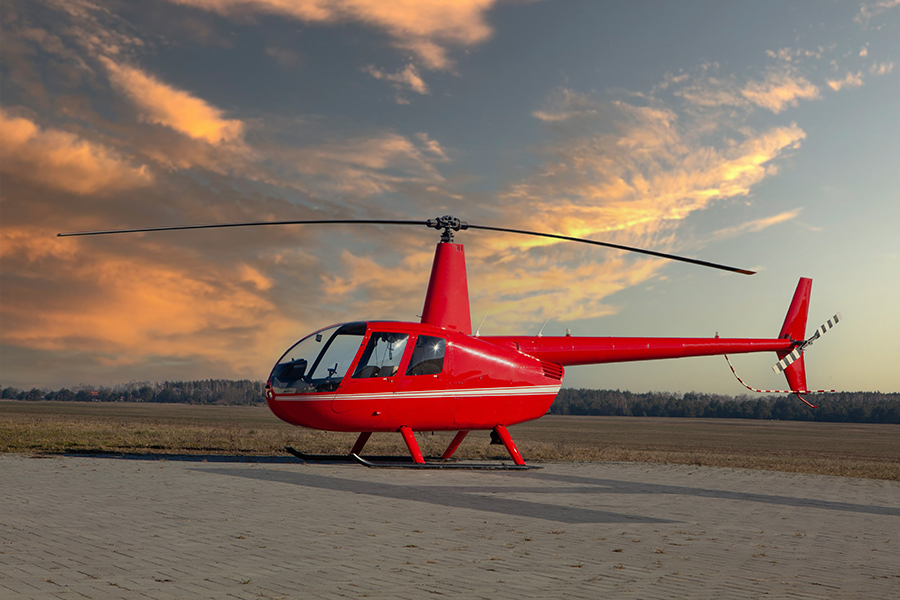
Stepping up from the R22 to the R44 is not that difficult, and it is often treated as though it involves nothing other than getting used to flying something larger. But there is far more to it than that. For a start, not only is the R44 much bigger, but most of the size increase is in the length. So you have this long tail behind you, which you can’t see, and which you are most definitely not used to when you are flying.
Then there are the different R44 types. The old ‘Astra’ has very heavy controls, which can be quite a shock for an R22 pilot. The newer R44 Raven has a hydraulic system, which would be something totally new for an R22 pilot, while the Raven II is fuel injected, which means the start-up is very different. I remember struggling to start a Raven II after flying one for the first time, having just dropped off a passenger. No one had told me that fuel-injected engines can be difficult to start when warm and that things might be easier if I had a tea break and then tried again. It was a little thing, but if I had been stuck somewhere where advice wasn’t available it could have been a problem.
Converting From The Robinson R22 To The Schweizer 300
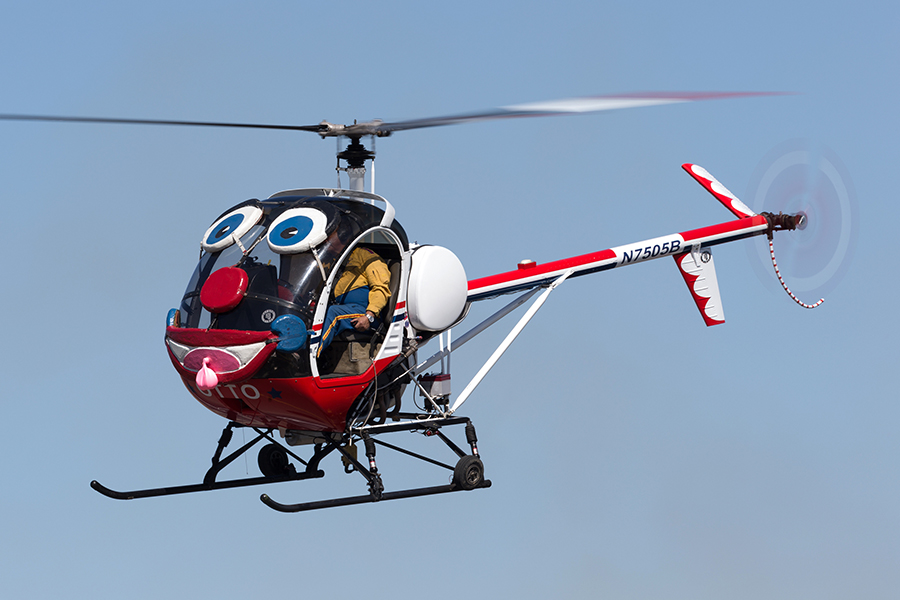
The Schweizer 300, another common training helicopter, also has a fuel-injected engine course. However, unlike the majority of modern helicopters, it does not have an RPM governor. Therefore a pilot converting to this type needs to become accustomed to a degree of manual throttle control. The ‘300’ has a very effective correlator, so you don’t need to do a lot of throttle tweaking. But if like many of us, you’ve assumed that the throttle is something you leave well alone except when practicing autorotations, this could still come as something of a shock. The same applies if you try flying a Rotorway Exec, or an older type like a Bell 47 – again, no governor and you’ll need to learn about throttles.
Converting From The Schweizer 300 To The Robinson Helicopters
Is life easier for the Schweizer 300 pilot converting to the R22 or R44? Not really. He or she would need to learn about applying carburetor heat, and while not complicated, this is really important, particularly if you live close to the sea, or anywhere that’s cool and/or damp. ‘Carb’ ice can cause engine stoppage and kill you, so you want to know all about it before you go flying, not learn about it afterward – which could be too late.
Converting to Turbine Helicopters
Although most people learn to fly on piston-engined helicopters such as those described above, many convert to turbine engined machines soon afterward, most often the Bell JetRanger. This involves some major changes, some of which will be described below. It’s enough to say here that you should never attempt to fly a turbine helicopter for the first time without some training. They are very different, particularly where the start-up procedure is involved. You could very easily do a lot of rather expensive damage if you don’t know what you are doing, so please don’t try it!
Helicopter Control And Engine Differences
Now let’s take a look at the actual helicopter controls and how they can vary. When it comes to the helicopter controls, contrary to what you might think, there can be a few differences. And helicopter engines can vary quite a lot.
Cyclic Differences Between The Robinson Helicopters And Other Types
In most helicopters, the cyclic is directly in front of the pilot, but the R22 and R44 have an innovative T-bar design. Changing from one cyclic to the other isn’t a big deal, but it can take a little practice. And converting from a larger helicopter to the twitchy little R22 may be difficult, even for experienced pilots. When I was flying in the USA, many years ago, two ex-military pilots came to the school to train as R22 instructors, having only flown large turbine helicopters up until then. They had thousands of rotary hours, but they looked completely shell-shocked for the first few days of their R22 flying!
Converting From Piston Engined To Turbine Helicopters
What about converting to turbine helicopters? Luckily everyone – or almost everyone – realizes that this is a big step or at least one that definitely requires further training. You must know what you’re doing if you’re not to have a ‘hot start’ and rather expensively fry the engine when flying a turbine helicopter. In the UK at least five hours of conversion training is required. However, some insurance companies require far more – and they must have a good reason for this!
Converting Between Different Turbine Helicopters
Suppose you’ve done a turbine conversion, but you now fancy flying…maybe an EC120. So you learn a slightly different start-up procedure, then jump in and lift off? You probably could, but be careful! In this machine, as in most French and Russian helicopters, the rotors turn in the opposite direction from those on British and American rotary aircraft. This means that you use the pedals in the opposite direction from that which you are used to, ie the RIGHT pedal is now the power pedal. It’s not a big deal, but you do need to be aware of it. I’ve found in the past that taking off is not a problem, but making an approach and transition to a hover is harder. You need a lot of right pedals in a big aircraft, and my right foot simply isn’t used to having to do that much work.
Problems In Particular Areas Of Flight
You might still wonder why I’m making such a fuss about all these differences. After all, most of these things can be learned while you’re flying, can’t they? Some can, but the problem is that things can go wrong extremely quickly in a helicopter – and that’s why I’m so wary when flying new types. Let’s look at times when things are most likely to get out of control if you are new to a particular type.
Take-Off Difficulties
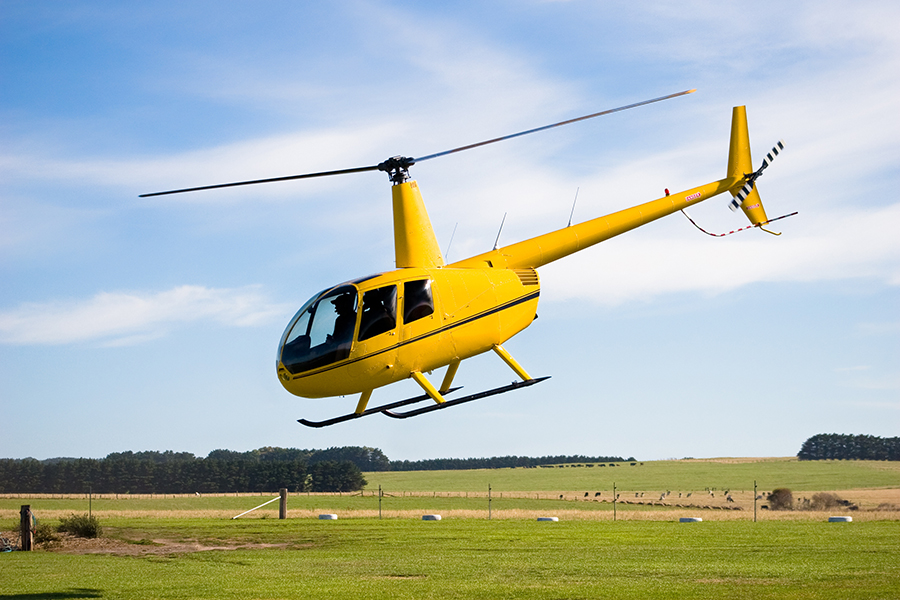
The take-off is a time when something can very easily go haywire – dynamic rollover, ground resonance, or plain lack of control meaning you hit something. Are you likely to get a helicopter into this state, even when flying a new type? We’d all like to think not, but I know that I can’t be absolutely certain since each helicopter type has very different handling qualities and a generally different feel during take-off. Learning about those differences is best done after a little practice in a safe environment, and that probably means with an instructor and well away from other traffic.
Transition To Forward Flight
What about the transition to forward flight? You might think that is straightforward, and usually, it is. But I remember getting caught unawares in an MD500, in which a lot of nimble footwork is required to keep the helicopter flying straight. And in a number of aircraft, when doing flight tests, I’ve realized that I’ve been far too overloaded to note our rate of climb. No big deal, but it meant that if anything went wrong, I probably wouldn’t have had enough spare capacity to deal with it. That’s not a situation in which you want to end up.
Landing Problems
Again, this is a time when there is a high workload for the pilot, and things can easily go wrong if you are flying a new type. So you do want to practice in advance, before you go to a new airfield or carry passengers, for example.
Flying Different Helicopter Types As An Experienced Pilot
What about when you have qualified as a helicopter pilot, and are fairly experienced at flying different types? Despite what I’ve said above, there are more differences between some helicopter types than others. So it is easier to convert between some helicopters that are similar, than others that may be very different. So I’ll now split them into three categories so that we can look at the main differences between them. Just for interest, I’ll let you know my favorite in each category, although this is of course very personal.
Small Helicopters
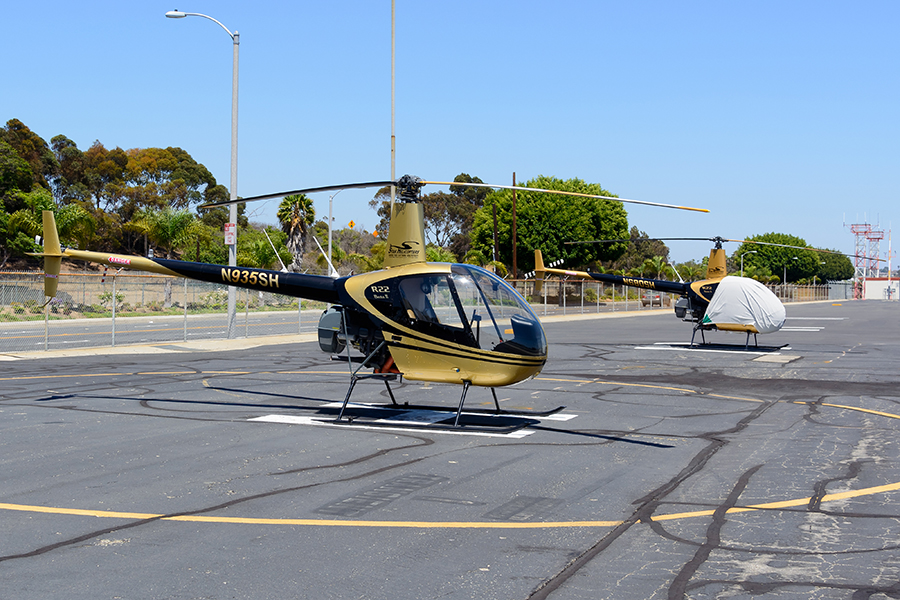
These are generally 2-3 place aircraft, and this group includes the Robinson R22, Bell 47, Rotorway Exec, Enstrom 280, and Schweizer 300.
The Enstrom and Schweizer are both very stable and easy to fly. They are used as trainers because they are such forgiving machines, and that is a rare characteristic in a small helicopter and one which shouldn’t be knocked. The Rotorway is quirky and interesting, a kit aircraft that really works. The Bell 47…what can I say? It is like flying a piece of history, and although it’s difficult to manage and requires better RPM control management than many of us modern pilots ever learned, I have never yet met a pilot who didn’t like it.
Then there is the much-maligned R22. I’m prejudiced of course, for, like many people, this is the helicopter on which I learned to fly. So, despite the fact that it is twitchy, unforgiving, cramped, and under-powered, I love it because I know it so well. I don’t just fly an R22 – I put it on like an old set of clothes and it becomes a part of me. I feel as though I could do anything in it, so for me twitchiness becomes responsiveness, and lack of power is a challenge. As for being cramped, since I’m rather small myself, I appreciate it being one of the few helicopters in which I don’t struggle to reach all the controls. How could I not like all that? So, perhaps a trifle unfairly, the R22 is my favorite in this group.
Popular Helicopters
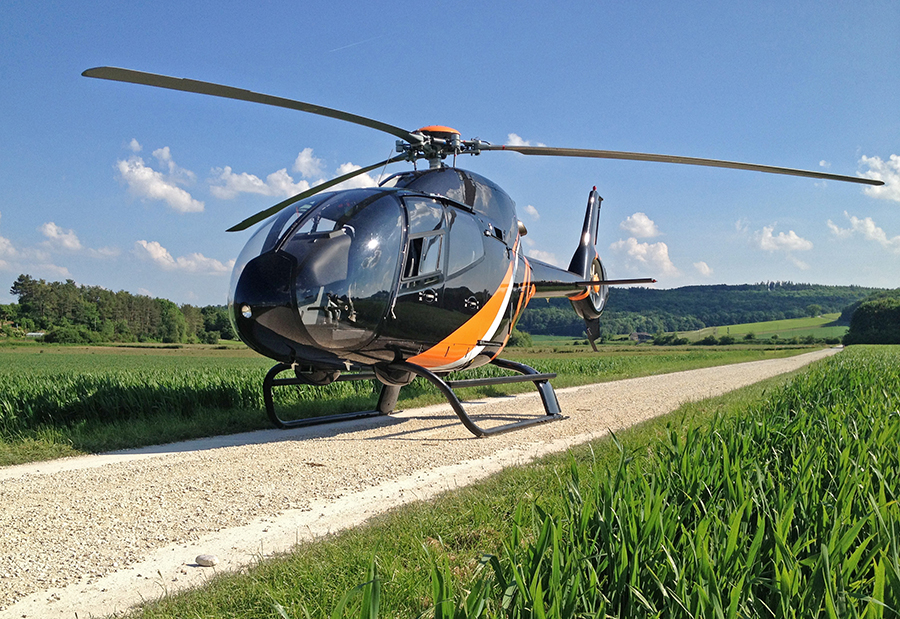
My next group of helicopters includes all of what I call ‘Popular Helicopters’. These are the 4-6 seater (usually) machines that are well known and loved, used extensively by private owners, charter companies, police, air ambulance, and other utility companies. They include the Eurocopter EC 120, 135, 130, and 145, The Agusta 109, The Robinson R44, the Bell 206 JetRanger and LongRanger, MD500, and Enstrom 480. There are many others, but those mentioned are the ones that I have flown at some time.
So which of these do I like? There are quite a few, and for various reasons. The R44 has similar flying characteristics to its younger brother, and converting to it from the R22 is relatively easy. It is a machine with which I am fairly familiar rather than one which I have just flown for a short time, and in the case of rotary flying, familiarity can lead to affection. All the Bell, Eurocopter, and Agusta helicopters are modern, stable, and comfortable, and I like all of them – what’s not to like? And the Enstrom 480 wins a prize for being easy to fly and forgiving, as did its younger brother, the 280, in my first category.
However, my definite favorite among the popular helicopters, perhaps surprisingly to some, is the MD500. It is relatively small and cramped, and probably not of much use for most aerial work. I nearly decided to put it in my first category for that reason, but it is a four-seater. But for the pilot, it wins hands down. One word sums up this aircraft – fun! It has a reputation for being difficult to fly, but I didn’t find that it was, despite some nimble footwork being needed at times, particularly during the transition from the hover to forward flight. It is fast, maneuvrable, and designed for the pilot who wants to play, to throw a helicopter around and revel in the joy of flight. That being the case, I don’t suppose it would suit everyone, and indeed it doesn’t. But ever since I flew it, I’ve been hoping that someone would buy me a rather expensive birthday present!
Historic Or Unusual Helicopters
My third and final category consists of what might be termed ‘less common’ helicopters. Some of these are old, and some are simply rare in the UK and other countries in which I generally fly. Two of these are the Russian Mil MI-2 and MI-8. They’re both still definitely around, with the MI-2 being used as a training machine and the MI-8 being used for…just about everything. But that’s in Russia and various parts of Asia. I was lucky enough to do some flying in Russia one summer many years ago, and I managed several hours on both types. I enjoyed flying the MI-2, in which I eventually had enough experience to feel almost as comfortable as I do in an R22 and to ‘wear’ it rather than merely fly it. As for the MI-8, that was the first time I had flown a heavy helicopter, and I enjoyed its awesome power, despite struggling somewhat with the rather heavy and rather old-fashioned controls.
A flight in the Hiller UH12 gave me a real respect for the older generation of helicopter pilots, as had my attempt to fly the Bell 47 which I mentioned earlier. Neither type has an RPM governor, and this makes them a real challenge for modern helicopter pilots. In the case of the Hiller, my instructor had to sit behind me rather than having side-by-side seating, which is a little nerve-wracking when you’re flying a new type, especially a difficult-to-fly one like this. Nevertheless, I remember this helicopter with affection.
I have flown the Alouette II, Alouette III – and the Lama, which is basically a hybrid of the two Alouettes – since I’m lucky enough to live near an airfield where there are a fair number of pilots who love old and interesting helicopters and are happy to share their passion with others. All I can say is that there is something about flying a helicopter-type that has been around for so long, and that applied to all three of them. And in the case of the Lama, I was struck by its stupendous power, lifting five large people as though it was empty. I even had trouble stopping the climb before we reached the low cloud base. These helicopters were designed for heavy work at high altitudes, and I could see why.
However, my favorite in this group of historic or unusual helicopters has to be divided equally between the Gazelle and the Bolkow BO105. The Bolkow is big and butch and gave me a tremendous feeling of power; with its rigid rotor head, you can throw it around the sky to the extent that it is one of the few helicopters in which you can do aerobatics. The gungho instructor who put it through its paces for me ended up making me airsick – a rare occurrence for me. Yet I still loved the machine; again, I’ve never met a helicopter pilot who didn’t.
The Gazelle is sometimes known as the Ferrari of the skies, a name which is well deserved. It is fast and slippery, not difficult to fly with the right training, but easy to lose control of if you are not prepared for it. I remember struggling to descend on our return to the airfield, and rapidly finding myself too high and too fast, a situation which has happened to a number of private pilots who have bought Gazelles. The Gazelle should not be underestimated unless you want to join the rotary accident statistics, but it is well worth learning to fly one properly; again, everyone loves them.
Conclusion – And My All-Time Favorite Helicopter
As I said right at the start, all helicopters are very different from each other. This means that I like many of them, and often for different reasons, and the chances are that you too will find that after a while. So my overall favorite out of all those I have flown? Well, it is extraordinarily difficult to choose. So I’m going to cheat and pick two! It really has to be the MD500 and the Gazelle, both of which have been described above. These are my all-time most-loved helicopters, and if I ever had the chance to own either of them, I’d be ecstatic. And if you like hands-on flying, I think you will feel the same way.
